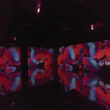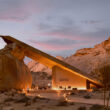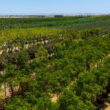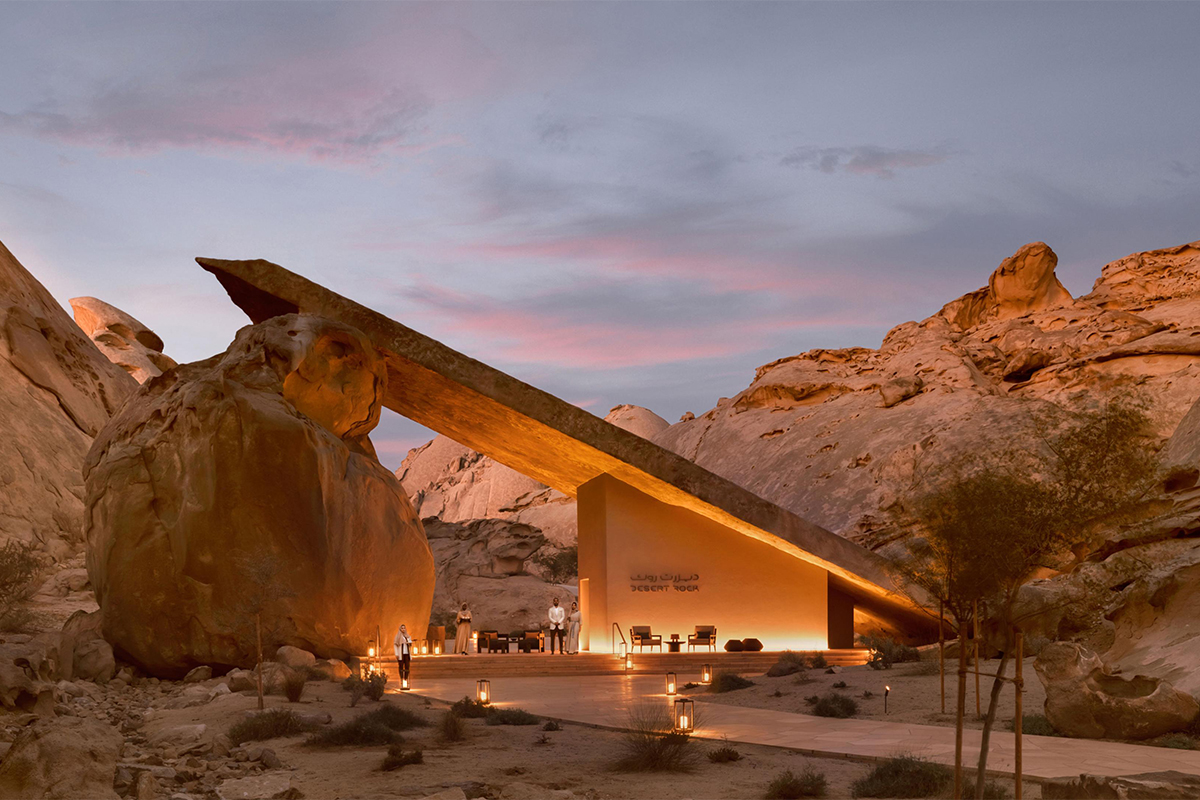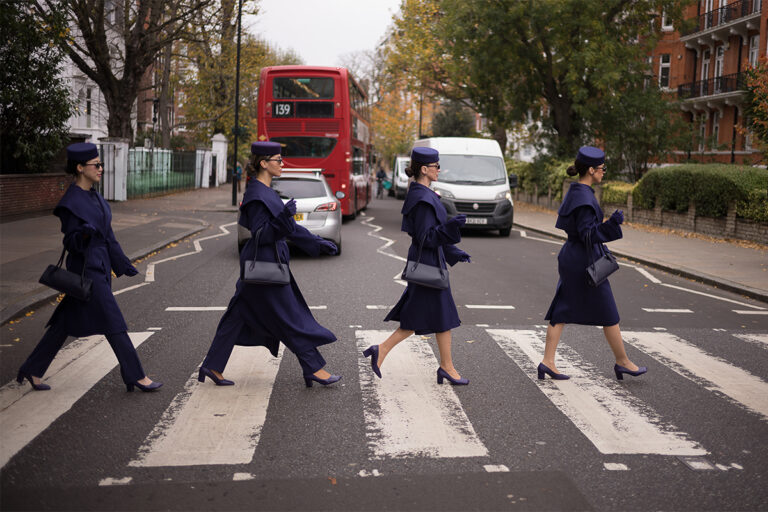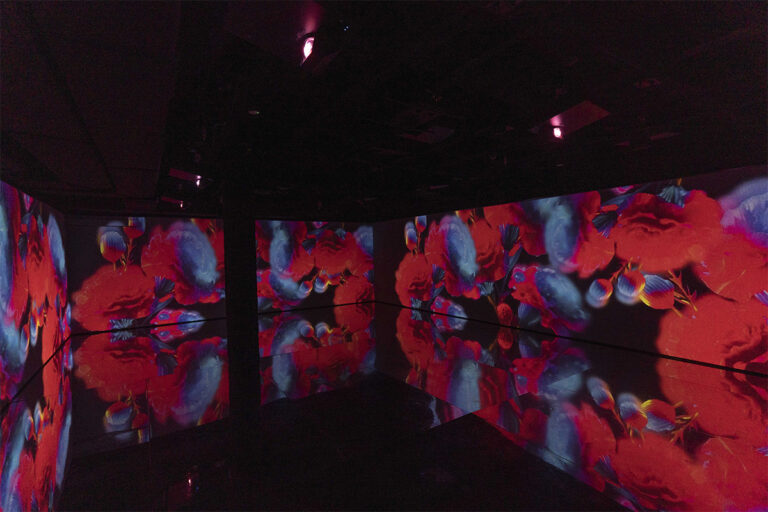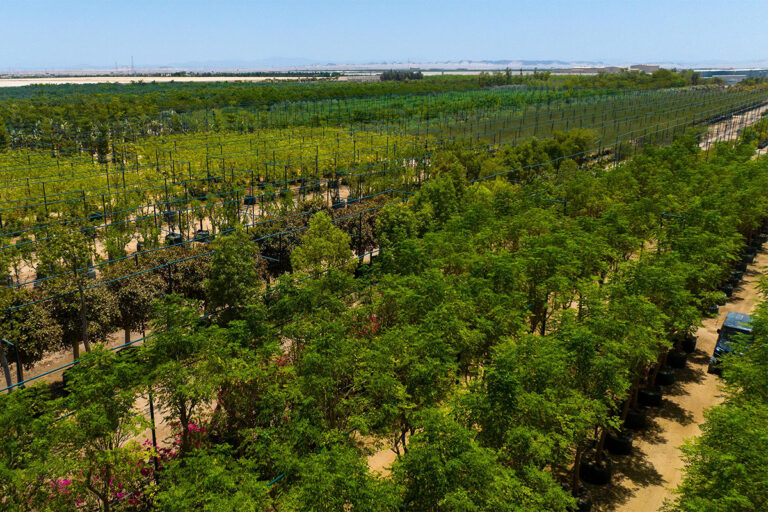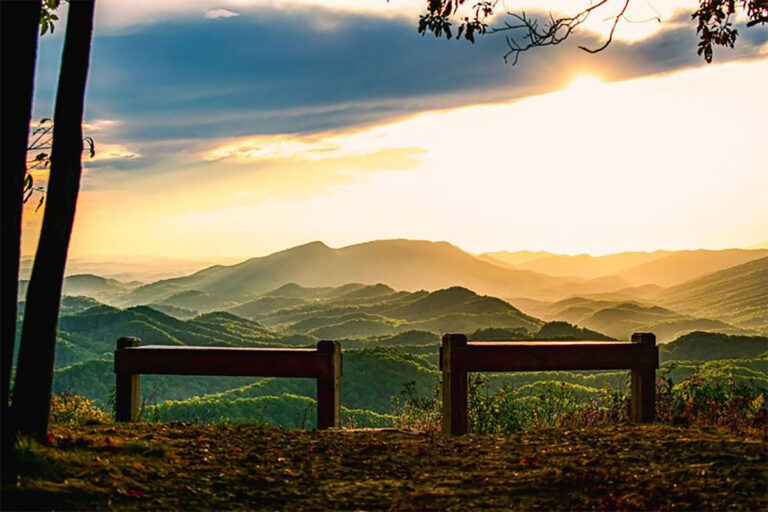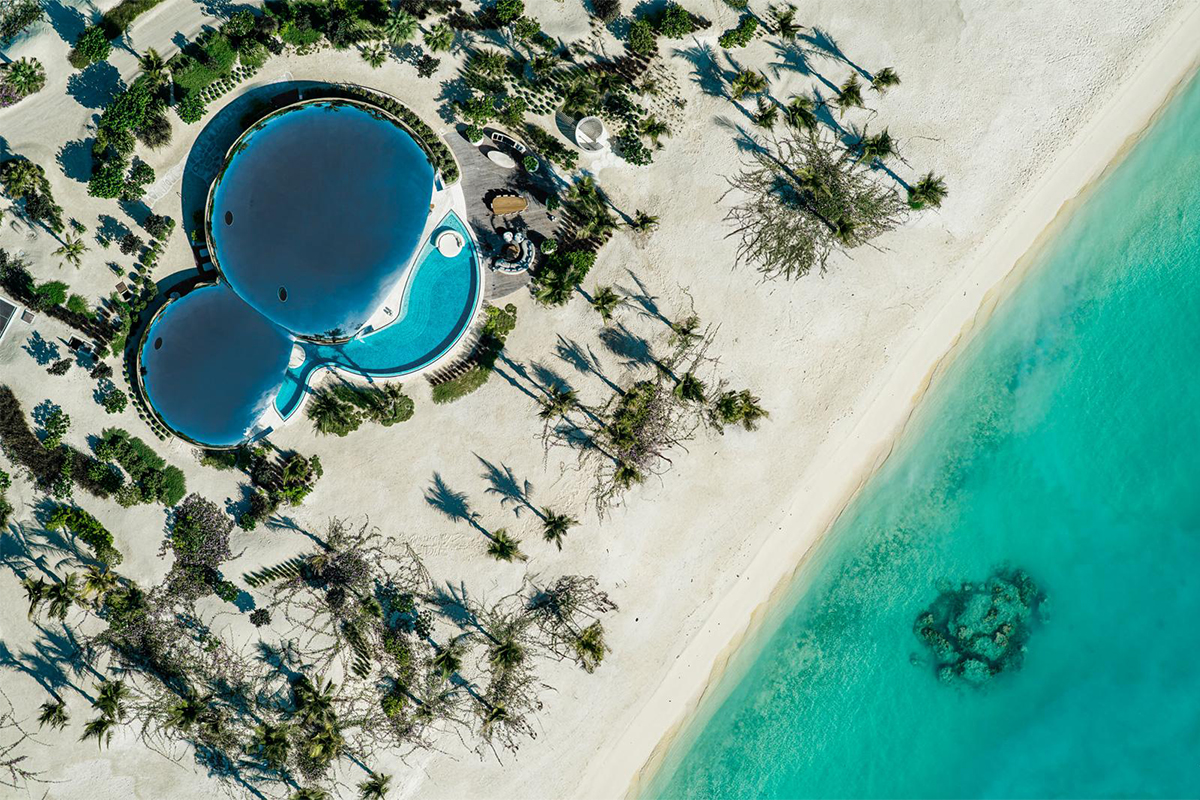
In a world of competitive luxury tourism, where overwater villas and private infinity pools have become the baseline rather than the pinnacle, the Red Sea has quietly pulled off a revolution. Or rather, Red Sea Global has — carving a new chapter into the sand, stone, and sea of western Saudi Arabia. Their message? The future of travel doesn’t lie in replicating past successes. It lies in building something that has never existed before.
Nowhere is this ambition more vivid than in two destinations that don’t just redefine luxury — they appear to have arrived from another planet. Desert Rock and Shebara aren’t resorts in the traditional sense. They’re bold experiments in architectural storytelling, environmental reverence, and emotional immersion. They ask: what happens when tourism doesn’t extract from nature, but fuses with it?
Desert Rock is perhaps the more radical of the two — a resort sculpted into the face of a mountain, not perched upon it. Designed by Oppenheim Architecture, the structure appears as though it has always belonged to the rock formations around it. Sixty-four rooms and villas are seamlessly slotted into the cliffs, with panoramic desert views and private pools that feel less like indulgences and more like sanctuaries. There is no spectacle here for its own sake — only a deep, almost cinematic invitation to be still, to feel the immensity of the landscape. “With Desert Rock, we didn’t just want to preserve the mountain — we wanted guests to become part of it,” says John Pagano, CEO of Red Sea Global. “It’s immersive in the truest sense of the word.”
“We didn’t build on nature. We built with it.”
John Pagano, CEO
Then there’s Shebara — an entirely different world, a futuristic seascape rendered in chrome and reflection. Off the coast on Sheybarah Island, the resort’s iconic stainless steel orbs float like waterborne moons, their mirrored surfaces bouncing sunlight and clouds in all directions. It’s otherworldly, yes — but also astonishingly grounded. Every aspect of Shebara is powered by solar energy, supported by its own dedicated renewable infrastructure. “Shebara represents what we believe the future of island hospitality should look like,” says Pagano. “Minimal impact, maximum wonder.”
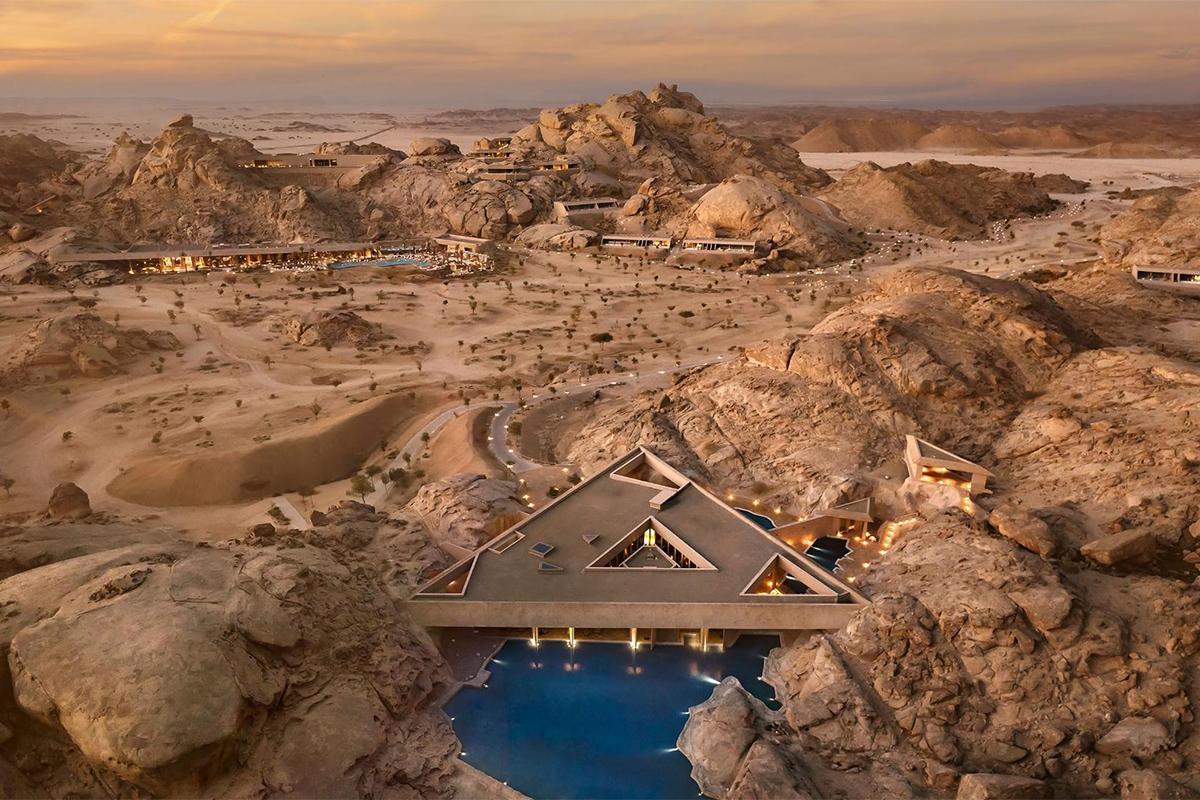
What ties these two extremes together — the monastic minimalism of Desert Rock and the shimmering sci-fi sensuality of Shebara — is a philosophy: that luxury and responsibility are not opposites, but collaborators. Red Sea Global didn’t build these places in spite of the environment; it built them because of it. Every decision, from site selection to construction to guest programming, follows the regenerative tourism playbook: leave nature better than you found it, and leave travelers changed.
And travelers are responding. In an age where every luxury destination markets itself as sustainable, Desert Rock and Shebara don’t just claim — they prove. Desert Rock didn’t bulldoze its mountain, it became one with it. Shebara didn’t disguise its power plant — it turned solar panels into the beating heart of the guest experience. These aren’t stories told in fine print; they’re built into the bones of the place.
The question now isn’t whether Red Sea Global can compete with the world’s leading luxury destinations — Maldives, Seychelles, the Amalfi Coast. The real question is whether those places can keep up. Because while others retrofit sustainability into aging blueprints, Saudi Arabia’s tourism future is being drawn in real time — bold, intentional, and unapologetically new.
There are no knock-offs here. No derivatives. Just the extraordinary courage to build beauty with purpose — and to invite the world to come see what it feels like.


